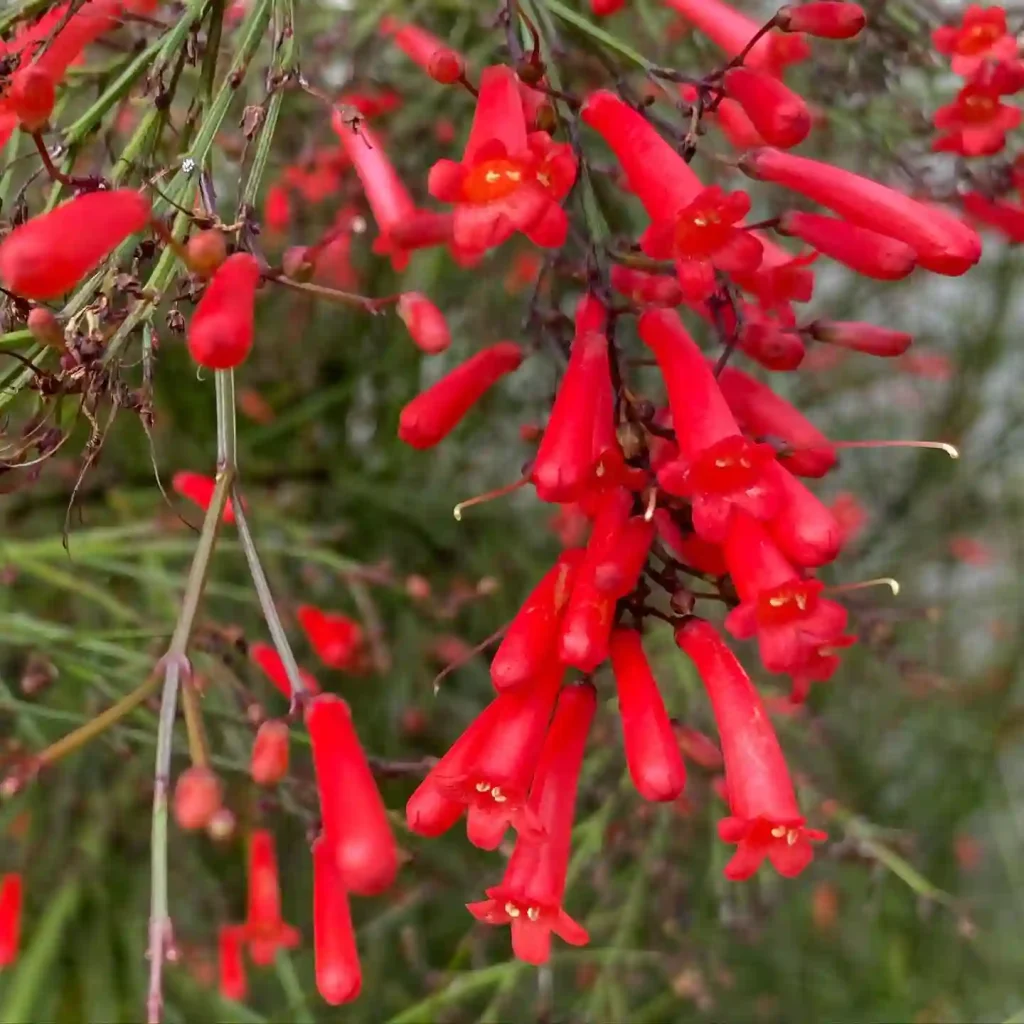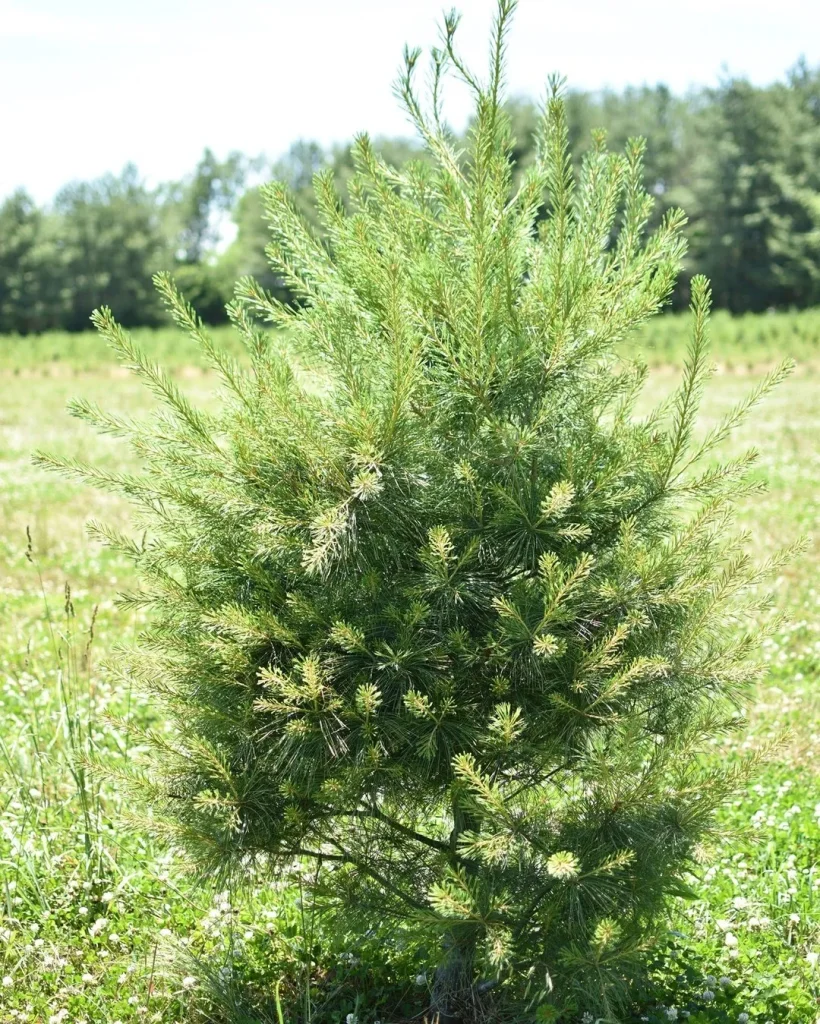
Emerald Green Magic: My Experience with Thuja occidentalis Smaragd
For years, I dreamt of having a private oasis in my backyard. Something that offered seclusion without feeling too closed in, a space where I could unwind and enjoy the serenity of nature. That’s when I stumbled upon the Thuja occidentalis Smaragd, also known as the Emerald Green Arborvitae.
5 Species in Genus Thuja
This captivating evergreen quickly stole my heart. Its vibrant emerald foliage promised a year-round pop of color, and its compact, pyramidal form seemed perfect for my vision. But before I went all in, I wanted to learn everything I could about this plant.
In this article, I’ll share my experience with Thuja occidentalis Smaragd, answering all the questions I had (and maybe some you have too!) about planting and caring for this fantastic addition to any landscape.
Thuja Occidentalis Smaragd vs Emerald Green Arborvitae
Comparing Thuja Occidentalis Smaragd and Emerald Green Arborvitae, I found that Smaragd had a more compact, dense growth, making it perfect for tight spaces, while Emerald Green Arborvitae felt a bit wider and less uniform.
Thuja Occidentalis Smaragd vs Brabant
In my experience with Thuja Occidentalis Smaragd versus Brabant, Smaragd consistently maintained its vibrant green color and neat shape throughout the year, whereas Brabant seemed to get a bit shaggy and less uniform as it matured.
How to plant Thuja Occidentalis Smaragd?
Planting my Thuja occidentalis Smaragd was a breeze. These beauties thrive in well-drained soil, so I prepared the planting area by amending the existing soil with some compost or organic matter. They also prefer full sun to partial shade, so I chose a spot that received a good amount of morning light but offered some afternoon shade during the hottest part of the day.
When digging the planting hole, I made sure it was slightly wider and deeper than the root ball of my Thuja. Gently loosening the root ball before placing it in the hole encouraged healthy root development. Once settled, I filled in the hole with the amended soil, ensuring the root flare (the base of the trunk where it widens) sat slightly above the soil level. A good watering to settle the soil and eliminate air pockets finished the planting process.
How Fast Does Thuja occidentalis Smaragd Grow?
One of the things that initially attracted me to the Thuja occidentalis Smaragd was its manageable growth rate. Unlike some fast-growing privacy trees that can quickly become unruly, this variety grows at a slow to moderate pace, typically adding 12-18 inches per year. This slow and steady growth makes them ideal for smaller yards or those who prefer a more controlled hedge.
Can You Cut Emerald Green Arborvitae (Thuja occidentalis Smaragd)?
Absolutely! Thuja occidentalis Smaragd responds well to pruning, making it a fantastic choice for hedges. The best time to prune is in late spring or early summer, before new growth hardens off. Use sharp pruning shears to maintain the desired shape, focusing on removing any dead, diseased, or overgrown branches. Remember, a little goes a long way, so start slow and prune conservatively.
What to Plant With Thuja occidentalis Smaragd
While Thuja occidentalis Smaragd can certainly hold its own as a standalone specimen, it also plays well with others! For a touch of color and contrast, consider planting flowering perennials like lavender or daylilies at the base. Shrubs with contrasting foliage textures, like burgundy smokebush or golden ninebark, can also add visual interest.
How to Care for Thuja occidentalis Smaragd
Taking care of your Thuja occidentalis Smaragd is relatively simple. Here are some key things to remember:
- Watering: These evergreens appreciate consistent moisture, especially during the first year after planting. Once established, they are moderately drought-tolerant but will benefit from occasional deep watering during dry spells.
- Mulching: A layer of mulch around the base of your Thuja will help retain moisture, suppress weeds, and regulate soil temperature. Aim for a 2-3 inch layer of mulch, keeping it a few inches away from the trunk to prevent rot.
- Fertilizing: While not strictly necessary, a light application of balanced fertilizer in early spring can give your Thuja a boost.
Potential Problems and Solutions
While generally a trouble-free plant, Thuja occidentalis Smaragd can be susceptible to a few common issues:
- Bagworms: These pests can defoliate your Thuja. Regularly inspect your trees for signs of bagworms, which look like small brown bags hanging from the branches. Handpicking or applying insecticidal soap can help control them.
- Cedar Aphids: These tiny insects feed on the sap of your Thuja, causing stunted growth and distorted foliage. Insecticidal soap or neem oil spray can be effective against them.
Conclusion: A Touch of Emerald Elegance
The Thuja occidentalis Smaragd has transformed my backyard into the private oasis I envisioned. Its vibrant green foliage adds a touch of year-round elegance, while its manageable size and slow growth make it a perfect fit for my space. With a little care, this versatile evergreen can bring beauty and privacy to your landscape as well.
If i die, water my plants!



